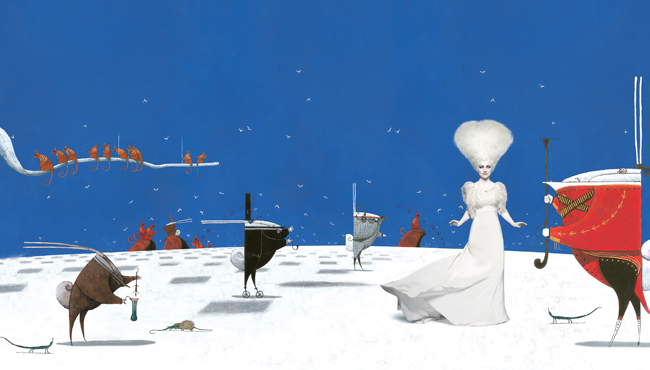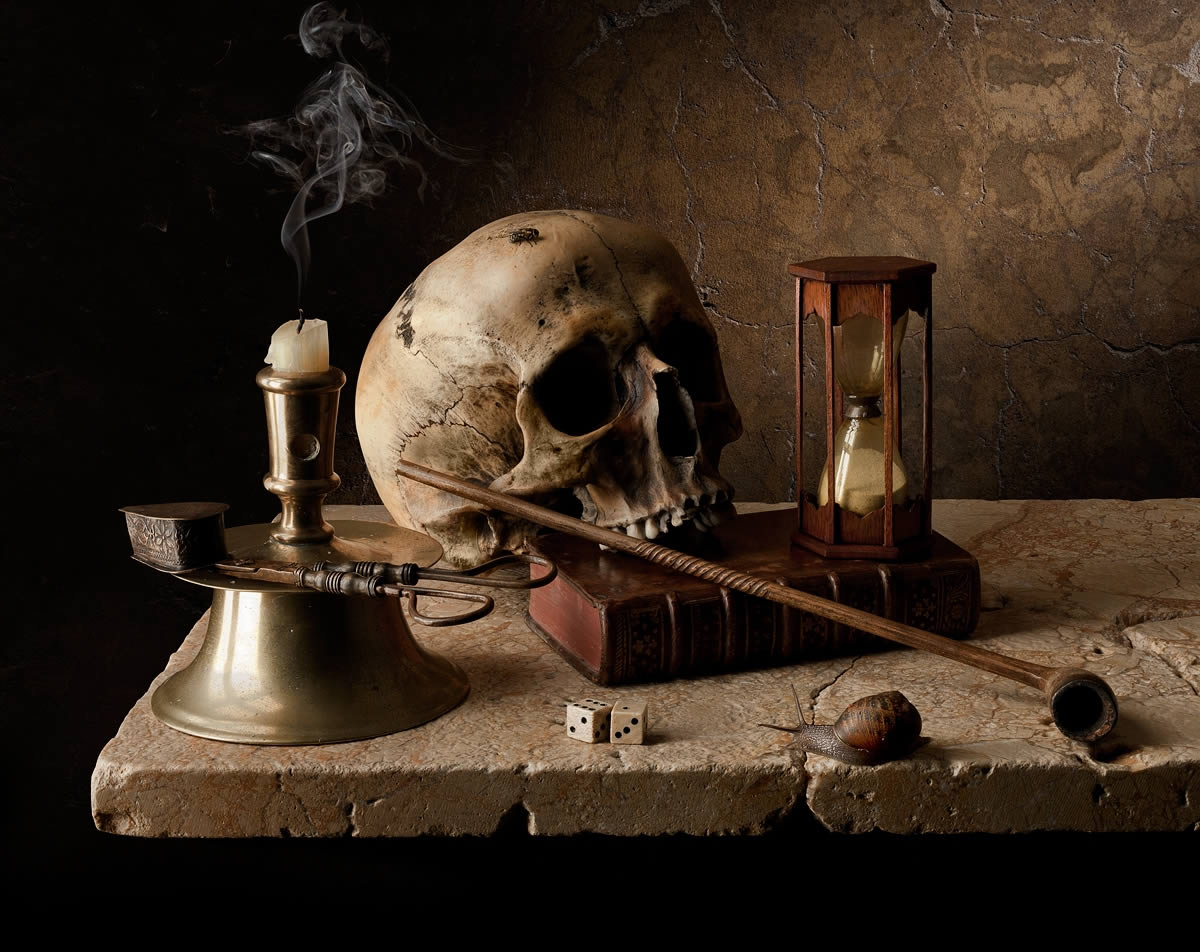In my earlier discussion on Found Stories, I mentioned three interactive stories that I wanted to examine. This first of these, Ruins, is the oldest and perhaps the simplest in terms of approach. Dear Esther is more recent and takes the form of a dimensional first person, um, well, not a ‘shooter’ as there is no shooting… a first person wanderer? The story begins on a dock at the shores of a deserted island, probably somewhere in the Outer Hebrides or maybe an outlying island of the Orkneys. Without knowing anything about this ‘game’ it would be easy to think that there will be monsters or ghosts or something that will need violent dealing to, but there is not. There is a mystery… but it is not an extrinsic mystery. This is where things get interesting.
Author Archives: Christopher Johnstone
In Praise of the Adult Colouring Book
There is a very strange thing that happens whenever a popular idea runs wild through the publishing industry. And for all it’s slowness of pace, the publishing industry does experience these heady rushes and crazes from time-to-time. By this, I don’t mean a hyped up genre, author or title. Instead I’m thinking of the sort of book-as-something-more-than-a-book craze. Think back on the rush of magic eye books in the late nineties, or sudoku books, or the current mass of colouring books for adults… a novel and (usually) interactive idea comes along, there is a rush and fury of enthusiasm, and in time, eventually the novelty fades and the idea drifts away. Though in the meantime some odd reactions seep out of the woodwork.
Found Stories: Ruins
Ruins, by Cardboard Computer is a free, slightly older example of the Found Story, and if you’d like to experience what this mode of storytelling is like you can download it and toy around. Possibly, you should do so before even reading this piece. Although I will try to avoid spoilers, I may end up revealing some elements of the tale, and a big part of the joy of Found Stories, is discovering the story, piece by gradual piece.
Found Stories
There is a very embryonic form of storytelling emerging from the creative world at the moment. We are perhaps on the threshold of a totally new field of storytelling, and that’s an exciting interesting thing. That said, I remain a little unsure whether The Melbourne Review of Books is even the right venue to be reviewing these storytelling experiments, as they are not books exactly… although on the other hand, a podcast or audiobook or eBook isn’t a traditional book either, and the storytelling urge and principles in these new story objects is closer to novels than to film or TV.
The Rabbits (Opera)
The Rabbits, composed by Kate Miller-Heidke, Lally Katz as librettist, is an uncomfortable piece of art, though unfortunately not in the way the creators probably intended. The opera is an adaptation of the John Marsden authored, Shaun Tan illustrated book of the same name. The book is a nuanced, thoughtful examination of contact between two cultures that did not understand one another with tragic results. There is almost no need to point out that it is an allegory for Aboriginal-European contact in Australia, although some international readers might not be aware of this, so perhaps it still bears saying.
Memento Mori
In Victorian times there was a fashion for keeping Memento Mori about the place, maybe on your desk, glaring gloomily at you… maybe on the mantle above the fireplace. The Memento Mori was intended to be, as the name suggests, a reminder of the finitude of human life. It was supposed to say to you, remember that one day you too shall die.
Differential Psychology of Character
One of the hardest things to do when writing fiction is to get your head into the space of someone who thinks completely differently to you. It is all too easy to characterise another person’s way of thinking with splashes of parody, misunderstanding or cartoonish mockery. To this end, I think an interesting experiment is to have a look at some of the categories that psychologists use to define people’s outlooks on life, and mix and match a few of them to try and give you a genuinely different psychological perspective from your own. This will tend to not be easily done: even writers who are able to master distinctive dialogue and voice tend to fall prey to giving all their characters the same perspective on time, or the same ideas about pleasure. Without reflecting hard on your own perspective of time, it may be difficult to realise you even have such a thing, and that it may define how you see the world.
The Reflections and the Dreamings
This morning I caught an episode of Books and Arts Daily on ABC Radio National. Among the other stories, there was an interview with Arena Theatre Company artistic director Christian Leavesley along with performers Sophie Ross and Phillip McInnes on the topic of their upcoming theatre event for parents and children, The Sleepover (which incidentally sounds magical and makes me wish I were eight years old again just to attend such a thing).
Self Publishing in the Age of Information Overload #7
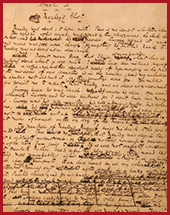 COVER DESIGN, LAYOUT & PIXEL DIMENSIONS
COVER DESIGN, LAYOUT & PIXEL DIMENSIONS
This is the second of my cover design posts. In my first post, a while back now, I undertook a bit of an investigation into the dimensions of book cover images that are most suitable for the largest two markets, Amazon Kindle and Apple iBooks. I’m going to elaborate on this, explaining how I’ve approached cover design and why I made the choices I made.
Candles Among Us
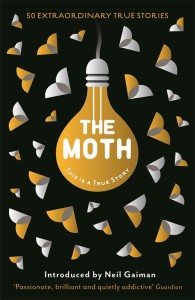 THE MOTH: THIS IS A TRUE STORY
THE MOTH: THIS IS A TRUE STORY
Edited by Catherine Burns
Allen & Unwin, May 2015, RRP $21.99
It is an opportune moment to review the printed collection, The Moth: This is a True Story. At the upcoming Melbourne Writers Festival there will be a session transporting The Moth from its natural habitat in New York to Melbourne. You should head across to the MWF website to purchase tickets if you have a chance. It’s likely to be a beautiful night of good stories well told, cunningly spun and woven and cast into the audience to lure you. As if to a flame.
For the stories are the flames here.
Self Publishing In The Age Of Information Overload #6
 THE IMPORTANCE OF BEING EDITED
THE IMPORTANCE OF BEING EDITED
If you trawl through the reviews of sundry author-published works on venues like Amazon or review sites such as Good Reads, one of the most common complaints relates to the quality of editing. Unfortunately, your primary school teachers were right: people will judge you on the basis of your writing and typos, spelling errors, poor grammar and confused writing will make a reader think you are either careless or ill-educated or both.
Where There Are No Patterns…
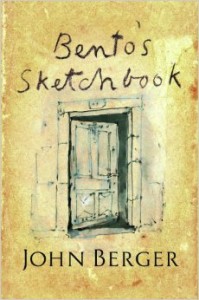 BENTO’S SKETCHBOOK
BENTO’S SKETCHBOOK
John Berger
Allen & Unwin, March 2015, RRP $29.99
How to review this book? Where to begin? In what mode to work? I have looked around at a few other reviews, and I wonder a little if most of them have missed the point. Certainly, in some instances that is to be expected. A review of Bento’s Sketchbook in a magazine of art will focus mostly on the beautiful inked and painted work, and the high quality of reproductions. Such a venue should be allowed to miss the point, or rather, they should be allowed and expected to focus on other points of special relevance.
But I wonder a little at reviews in more wordy outlets that have focused entirely on John Berger’s honest close-up examination of everyday life, or his concerned, vibrant discourse on global issues of greed and capitalism run amok. I think those reviewers have missed the particular point they might have arrived at, and how am I to go about trying to explain why, and how, and what the point was anyway.





